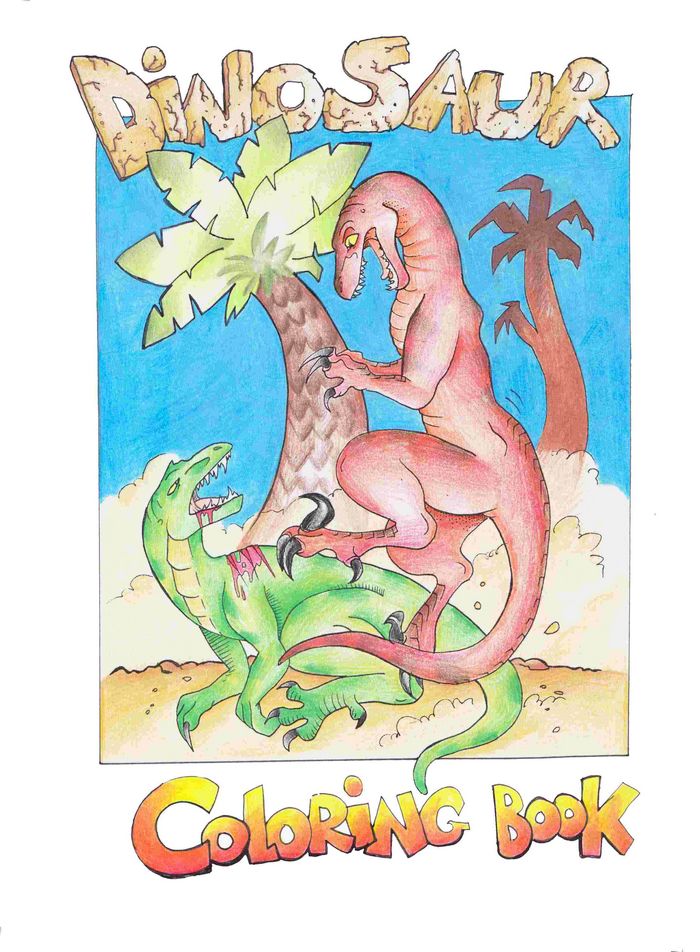Deinonychus - the hunter that drove the dinosaur renaissance
A light-framed, agile creature with big, prey-spotting eyes and rapier-sharp claws designed for slashing, turned the idea of slow-moving, slow-witted dinosaurs on its head. This is further borne out by the high brain-to-body weight ratio which shows a high level of intelligence by Cretaceous standards. Read on to find out more >>>
Light, small, fast, with big eyes which missed nothing, Deinonychus was a fearsome predator of the Cretaceous. Although not quite as famous as Velociraptor, which was immortalised in Jurassic Park, they are perhaps more significant in palaeontological circles. Until the discovery of Deinonychus, dinosaurs were thought to be slow-moving, dim-witted laggards. But a light-framed, agile creature with big, prey-spotting eyes and rapier-sharp claws designed for slashing, stood the idea of slow-moving, slow-witted dinosaurs on its head. This is further borne out by the high brain-to-body weight ratio which shows a high level of intelligence by Cretaceous standards. Until then dinosaurs were also thought to be cold blooded, but that idea was questioned too. Warm bloodedness would be required for a predator like Deinonychus to hunt and kill prey. And the similarity of the skeletons with birds led to the theory that birds were descended from dinosaurs, a theory which is widely accepted today.
Razor Sharp 13 cm Claws
Deinonychus hunted on two legs and had a large head with sharp teeth set in powerful jaws. It had 3 large, sharp claws on each hand which took the place of fingers, whilst the second toe of each foot comprised a 13 cm (5 inch) razor-sharp scimitar. To balance out its fast-turning manoeuvres it had a long tail, stiffened by bony rods. Deinonychus was approximately 3 m (10 feet) long, 1.5 m (5 feet) tall, and weighed up to 80 kg (175 lbs). It stood roughly 1.2 m tall – certainly tall enough to bring you down.
Hunted in Packs
There is a theory that Deinonychus may have hunted in packs, which would have allowed them to bring down very large prey, perhaps even large sauropods and ankylosaurids. Tenontosaurus may have been among its prey - an unarmoured but fast hypsilophodontid whose fossils have been found close to Deinonychus remains.
Digging up the Bones
The first fossils of Deinonychus were discovered in southern Montana by a team led by Barnum Brown back in 1931. Thirty-odd years later, John Ostrom with his assistant Grant E Meyer discovered more bones in Montana and one can just imagine the excitement when they spotted the bones sticking out of the ground.
John Ostrom's first important discovery was made late one afternoon in August 1964. While tramping along a slope Ostrom and Meyer, came upon a wonderful sight: large, sharp claws reaching out of an eroded mound. "We both nearly rolled down the slope in our rush to the spot," Ostrom recalled later.
They uncovered a powerful, three-fingered grasping claw and then a foot. The inner toe stuck out like a sharply curved sickle. After further research, Ostrom determined that the claws and feet belonged to a fleet footed, predatory dinosaur that lived 125 million years ago. He gave it the name Deinonychus, meaning "terrible claw." New York Times, 2005.
I think I would have hurled myself down that slope too, to see those bones sticking out of the ground. Wow!
And seeing that you are here, grab yourself a copy of our free colouring book, which is full of wonderful dinosaurs and other Mesozoic creatures for you to bring back to life.




